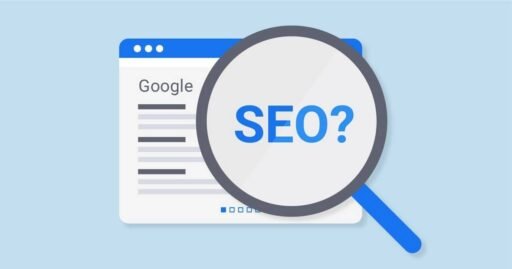When it comes to optimizing your website for search engines, meta tags play a crucial role. These tags provide important information about your web page to search engines, helping them determine its relevance to specific keywords. Meta tags include elements like the page title and description, which can have a significant impact on your website’s performance in search engine results pages (SERPs) and click-through rates (CTRs).
Meta tags are HTML elements that describe the content of your webpage to search engines. While they are not visible to visitors, they are vital in determining a page’s relevance to searched keywords. Some important meta tags include the page title, which appears as a clickable link in search results, and the meta description, which provides a brief summary of the page’s content.
Getting started with meta tags can be daunting, but understanding their purpose and how they can enhance your website is essential. They can be used to describe your product or service, provide location information, or categorize your blog posts. Common types of meta tags include title, description, keyword, image alt text, robots, language, and schema markup. In this article, we will focus on the most common ones, specifically descriptions and keywords.
While content and links are crucial in SEO, meta tags should not be overlooked. They play a vital role in the optimization process. Better title tags can significantly impact the success of your page, and leaving meta tags blank can result in search engines choosing suboptimal ones for your page. The page title tag is especially important as it is the first thing users see in search results. Having descriptive and concise page titles that accurately reflect the content and match user search intent is highly recommended.
The page title tag is the main descriptive element of your page. It appears as the clickable link in search results and should accurately reflect the page’s content. Google recommends descriptive and concise page titles, avoiding vague or redundant text. It’s important to avoid keyword stuffing and focus on providing useful and informative titles. Additionally, branding your page title is acceptable and can help differentiate your site from others.
Google has provided valuable insights regarding page titles. Although title tags are a ranking factor, they are not the most critical part of a page. Google recommends writing natural titles that accurately reflect the content and adhere to search intent. Avoiding keyword stuffing and focusing on providing valuable titles that help users understand the page’s content is essential. Google’s new title generation system aims to produce more accurate and descriptive titles.
The meta description tag provides a short summary of a webpage’s content. It appears below the page title in search results and serves as a sales pitch to entice users to click on your link. While meta descriptions don’t directly affect rankings, a well-written description can improve click-through rates. It’s recommended to keep meta descriptions under 120 characters, use sentence case, be accurate and descriptive, and match search intent.
Meta robots tags control search engine behavior regarding crawling and indexing. They determine whether links should be followed and pages should be indexed. Common directives include “follow” to allow link crawling, “index” to allow page indexing, “noindex” to prevent page indexing, and “nofollow” to prevent link crawling. Using these tags properly is essential to avoid blocking essential parts of your website from search engine crawlers.
Meta refresh tags instruct browsers to automatically refresh a page after a certain time interval. They can also be used to redirect users to another URL after a specific time. From an SEO perspective, it’s recommended to use 301 redirects instead of meta refresh redirects as they provide faster processing and a better user experience. Meta refresh tags should be used sparingly and with caution.
Open Graph and Twitter Card meta tags allow you to control how your webpage appears on social media platforms like Facebook and Twitter. These tags let you set the title, description, and image that will be displayed when your webpage is shared. By optimizing these tags, you can increase click-through rates on social media posts and enhance your website’s visibility on these platforms.
Meta keywords were once a popular SEO practice but have been largely abandoned due to abuse and manipulation. Search engines like Google no longer rely on meta keywords for ranking purposes. While including relevant keywords in your content is still important, meta keyword tags are no longer considered a significant factor in SEO.
In conclusion, meta tags play a crucial role in SEO by providing information about your webpage and influencing search engine behavior. While content and links are important, optimizing meta tags can significantly enhance your website’s visibility and click-through rates. It’s essential to use meta tags properly, including descriptive page titles and compelling meta descriptions, to improve your SEO success. By following best practices and staying updated with search engine recommendations, you can leverage the power of meta tags for SEO success.
Key Takeaways:
- Meta tags provide information about your webpage to search engines and are crucial for SEO optimization.
- They include elements like the page title and description, which impact your website’s performance in search engine results.
- Meta tags are HTML elements that describe your webpage’s content to search engines, helping determine its relevance to keywords.
- Properly optimizing meta tags, including page titles and descriptions, can enhance visibility and click-through rates.
- Meta keywords are no longer a significant factor in SEO, but relevant keywords in content remain important.
What Are Meta Tags?
Meta tags are HTML elements that describe your webpage’s content to search engines. While they are not visible to visitors, they play a crucial role in determining a page’s relevance to searched keywords.
Examples of important meta tags include:
| Meta Tag | Description |
|---|---|
| Page Title | The page title appears as a clickable link in search results and should accurately reflect the page’s content. |
| Meta Description | The meta description provides a brief summary of the page’s content and can influence users to click on your link. |
| Keyword | This meta tag used to be important for SEO, but search engines like Google no longer rely on it for ranking purposes. |
Meta tags are essential for helping search engines understand and index your webpage appropriately. By optimizing these tags, you can improve your website’s visibility and click-through rates in search engine results.
Getting Started With Meta Tags
When it comes to enhancing your website and optimizing it for search engines, meta tags are an essential tool to consider. Understanding their purpose and how to use them effectively can make a significant difference in your page optimization. Meta tags can be utilized to describe your product or service, provide location information, or categorize your blog posts. Let’s take a closer look at some of the most common types of meta tags:
Title Tags
One of the most important meta tags is the title tag. It represents the title of your webpage and appears as the headline in search engine results. The title tag serves as a concise and descriptive summary of what users can expect to find on your page. Optimizing your title tags with relevant keywords can help improve your page’s visibility and click-through rates.
Description Tags
Another vital meta tag is the description tag. It provides a brief summary of your webpage’s content, appearing below the title tag in search results. The description tag serves as an opportunity to entice users to click on your link by accurately and compellingly summarizing what your page offers. Crafting engaging and relevant description tags can significantly impact your click-through rates.
Keyword Tags
NOTE: The use of keyword tags has been largely abandoned by search engines and is no longer a significant factor in SEO.
Keep in mind that while keyword tags were once popular in SEO strategies, their importance has diminished over time. Search engines, like Google, no longer rely on keyword tags for ranking purposes. Instead, it’s essential to focus on incorporating relevant keywords naturally within your content to improve search engine optimization.
Other Meta Tags
In addition to title, description, and keyword tags, there are various other meta tags that can be utilized to optimize your website, such as:
- Image Alt Text: Describes the content of an image for better accessibility and SEO.
- Robots: Controls how search engine crawlers interact with your webpage, determining whether to follow links or index pages.
- Language: Indicates the language used on your webpage, helping search engines deliver more relevant results to users.
- Schema Markup: Provides structured data to search engines, enhancing the display of your webpage in search results.
Understanding and utilizing these different meta tags can contribute to the optimization and visibility of your website, improving your overall SEO efforts.
Why Meta Tags Are Important For SEO
When it comes to SEO, content and links are crucial components for optimizing your website. However, one aspect that should not be overlooked is meta tags. Meta tags play a vital role in the optimization process and can greatly impact the success of your page.
One important meta tag is the title tag, which is the first thing users see in search results. A well-crafted title tag can significantly increase the visibility of your page and attract more clicks. Leaving meta tags blank can result in search engines, like Google, choosing suboptimal tags for your page, which can negatively affect your SEO efforts.
Meta tags, especially title tags, should accurately reflect the content of your page and match user search intent. By having descriptive and concise title tags, you can effectively communicate what your page is about and entice users to click on your link.
Table:
| Title Tag | Impact on SEO | Best Practices |
|---|---|---|
| Descriptive and concise | Increases visibility and click-through rates | Accurately reflect page content and user search intent |
| Blank or suboptimal | Can negatively affect SEO efforts | Fill with relevant and compelling information |
In addition to improving user engagement, meta tags provide important information to search engines about the content and relevance of your page. They help search engines understand the context of your webpage and match it to relevant search queries.
By optimizing your meta tags, you can enhance the overall optimization of your website and increase its visibility in search engine results pages (SERPs). To ensure the best SEO results, it is crucial to pay attention to meta tags and implement them effectively.
Page Title Tags
The page title tag is a critical element of your webpage’s SEO. It serves as the clickable link that users see in search results, making it essential for attracting attention and encouraging clicks. A well-crafted page title tag accurately reflects the content of your page and plays a vital role in optimizing your website for search engines.
Google recommends creating page titles that are descriptive and concise. Avoid using vague or redundant text that doesn’t provide useful information to users. Instead, focus on crafting titles that clearly convey what your page is about and match user search intent.
When creating page title tags, it’s important to avoid keyword stuffing. Its best practice to incorporate relevant keywords naturally within the title without making it sound forced or spammy. Google places a high emphasis on user experience, so your page title tag should be informative and engaging rather than just a keyword-stuffed string of words.
Branding your page title is also acceptable and can help differentiate your site from others in search results. Including your brand name or providing additional context about your business or website can make your result more memorable and increase click-through rates.
What Else Has Google Said About Page Titles?
Google has provided valuable insights regarding page titles and their importance in search engine optimization (SEO). While title tags are considered a ranking factor, Google emphasizes that they are not the most critical element on a web page.
According to Google’s recommendations, it is essential to write natural titles that accurately reflect the content and align with search intent. Keyword stuffing should be avoided, and instead, the focus should be on delivering titles that provide value and help users understand the page’s content.
Google has also introduced a new title generation system aimed at producing more accurate and descriptive titles for search results. This system aims to improve user experience by displaying titles that are most relevant to the user’s search query.
It’s crucial for website owners and SEO practitioners to stay informed about Google’s recommendations and adapt their page titles accordingly. A well-crafted page title can significantly impact search results and click-through rates, ultimately driving more organic traffic to your website.
Meta Description Tags
The meta description tag is an important element in enhancing the visibility of your webpage in search results. It appears below the page title and serves as a concise summary of your page’s content, enticing users to click on your link. While meta descriptions don’t directly impact rankings, a well-written and compelling description can significantly improve click-through rates.
To optimize your meta descriptions, follow these best practices:
- Keep your meta descriptions under 120 characters to ensure they are fully displayed in search results.
- Use sentence case, capitalizing the first letter of each sentence.
- Be accurate and descriptive, accurately reflecting the content of your webpage.
- Make sure your meta description matches the search intent of users.
Why Are Meta Descriptions Important?
Meta descriptions play a crucial role in influencing user behavior and attracting clicks from search results. Although they don’t directly impact rankings, well-crafted meta descriptions can significantly improve the visibility and click-through rates (CTR) of your webpage. By providing an enticing summary of your page’s content, you increase the likelihood of users choosing your link over others.
Research shows that a well-written meta description can improve CTR by:
- Clearly conveying the value and relevance of your webpage.
- Appealing to users’ search intent.
- Standing out from competing search results.
Remember, meta descriptions are your opportunity to create a compelling and persuasive sales pitch for your webpage. Craft them carefully to captivate users and drive more traffic to your site.
Meta Robots Tags
Meta robots tags are HTML elements that control the behavior of search engines when it comes to crawling and indexing your website. These tags determine whether search engine bots should follow the links on your pages and whether your pages should be indexed in search results. By using meta robots tags, you can guide search engine behavior and ensure that your website is properly understood and ranked by search engines.
Common Meta Robots Directives
There are several common meta robots directives that you can use to control search engine crawling and indexing:
| Directive | Description |
|---|---|
| index | Allows search engines to index your page and include it in search results. |
| noindex | Prevents search engines from indexing your page and excluding it from search results. |
| follow | Allows search engines to follow the links on your page and crawl other pages. |
| nofollow | Prevents search engines from following the links on your page, limiting crawling to the current page only. |
Using these meta robots tags properly is essential for controlling how search engines interact with your website. By avoiding the improper use of these tags, you can ensure that important parts of your website are not accidentally blocked from search engine crawlers.
Meta Refresh Tags
Meta refresh tags are HTML elements that instruct browsers to automatically refresh a webpage after a certain time interval. They can also be used to redirect users to another URL after a specific time. While meta refresh tags can be useful in certain scenarios, it’s important to use them sparingly and with caution due to potential drawbacks.
Advantages of Meta Refresh Tags
- Automatic page refresh: Meta refresh tags enable websites to automatically refresh content, providing users with real-time updates.
- Simple implementation: Meta refresh tags are easy to implement and require minimal coding knowledge.
Drawbacks of Meta Refresh Tags
- SEO impact: From an SEO standpoint, meta refresh tags can have negative consequences. They may not be as effective as other techniques, such as using 301 redirects.
- Page load delay: Meta refresh tags introduce a delay in the loading process, potentially affecting user experience.
- Accessibility concerns: Automatic page refreshes can be disruptive for users who rely on screen readers or have limited internet connectivity.
Considering these drawbacks, it’s recommended to use 301 redirects instead of meta refresh redirects in most cases. 301 redirects provide faster processing and a better user experience, while also having a positive impact on SEO.
When using meta refresh tags, it’s crucial to set an appropriate time interval to avoid excessively frequent page refreshes. This ensures that users have enough time to consume the content before the page refreshes or redirects to another URL.
Remember, optimizing user experience is key in website design and SEO. Balancing the benefits and drawbacks of meta refresh tags will help you make informed decisions that align with your website and user requirements.
Open Graph and Twitter Card Meta Tags
When it comes to social media platforms like Facebook and Twitter, you want your webpage to stand out and grab users’ attention. That’s where Open Graph and Twitter Card meta tags come in. These powerful tools allow you to control how your webpage appears when it’s shared on social media, giving you the opportunity to make a strong first impression.
By optimizing your Open Graph and Twitter Card meta tags, you can significantly improve your click-through rates (CTR) and enhance your website’s visibility on these platforms. You have the freedom to customize the title, description, and image that will be displayed, ensuring that your content resonates with your target audience and entices them to click through to your website.
Open Graph is a protocol that was created by Facebook to enable webpages to become rich objects in a social graph. By incorporating Open Graph meta tags in your HTML, you can control how your content appears on Facebook when it’s shared or liked. This means you can tailor the title, description, and image to make it more engaging and intriguing to potential visitors.
Twitter Card, on the other hand, allows you to go beyond a simple tweet by attaching rich media experiences to tweets that link to your website. By adding Twitter Card meta tags to your webpage, you can choose the type of card (e.g., summary, image, video) and customize the title, description, and image that will be displayed, adding visual interest and value to your tweets.
Optimizing your Open Graph and Twitter Card meta tags is key to improving your social media presence and driving more traffic to your website. By crafting compelling titles and descriptions, and selecting eye-catching images, you can maximize the impact of your shared content and increase your click-through rates on social media.
Here are some best practices to keep in mind when optimizing your Open Graph and Twitter Card meta tags:
- Keep your titles concise and attention-grabbing
- Make your descriptions informative and compelling
- Choose images that are visually appealing and relevant to your content
- Test and preview your meta tags using Facebook’s Sharing Debugger and Twitter Card Validator
- Ensure that your meta tags are properly implemented in your HTML code
Meta Keywords: The Abandoned Meta Tag
In the early days of SEO, meta keywords were widely used as a practice to optimize websites. Website owners would include a list of relevant keywords in the meta keyword tag in hopes of boosting their rankings on search engines.
However, due to widespread abuse and manipulation of this tag, search engines, including Google, no longer rely on meta keywords for ranking purposes. They have evolved their algorithms to prioritize other factors such as high-quality content, backlinks, and user experience.
While including relevant keywords in your content is still important for SEO, the meta keyword tag is now considered obsolete and has been abandoned by most website owners and SEO practices.
Why were meta keywords abandoned?
Meta keywords were widely abused by website owners in an attempt to manipulate search engine rankings. Some unethical practices included keyword stuffing, where irrelevant or excessive keywords were added to the meta keyword tag, and using competitor brand names as keywords to drive traffic to their own sites.
To combat these tactics and provide users with the best search results, search engines like Google prioritized more reliable ranking factors such as high-quality content, user engagement metrics, and authoritative backlinks. As a result, meta keyword tags lost their significance in SEO practices.
Focusing on keyword optimization
While the meta keyword tag may no longer be relevant, keyword optimization remains an essential aspect of SEO. By conducting thorough keyword research and strategically incorporating keywords into your content and meta tags, you can increase the visibility of your website in search engine results.
Here are some key practices for effective keyword optimization:
- Identify relevant keywords and phrases that align with your content and target audience.
- Utilize these keywords naturally within your website content, including headings, paragraphs, and alt tags.
- Create informative and engaging meta title and description tags that incorporate relevant keywords.
- Optimize your website’s URLs, including keywords where appropriate.
- Monitor keyword performance and make adjustments based on search trends and user behavior.
Remember, the focus should always be on creating high-quality, valuable content that meets the needs of your audience. While keyword optimization is important, it should not compromise the overall user experience or the integrity of your website.
Conclusion
Meta tags are a vital component of SEO success and website optimization. These HTML elements provide valuable information about your webpage to search engines, influencing their behavior and determining your website’s visibility in search results. While content and links are important, properly optimizing your meta tags can have a significant impact on improving your website’s visibility and increasing click-through rates.
One key aspect of meta tag optimization is using descriptive page titles. A concise and relevant page title not only helps search engines understand your content but also serves as the first impression for users in search results. Additionally, crafting compelling meta descriptions can entice users to click on your link, further driving traffic to your website.
To achieve SEO success through meta tag optimization, it is crucial to stay updated with search engine recommendations and best practices. Regularly auditing and optimizing your meta tags, including relevant keywords and providing accurate descriptions, can help enhance your website’s performance and improve search engine rankings. Remember, effective meta tag optimization is an ongoing process that requires attention and adherence to SEO guidelines.
By harnessing the power of meta tags and following SEO best practices, you can leverage these HTML elements to boost your website’s visibility, attract organic traffic, and ultimately achieve SEO success.
FAQ
What are meta tags and why are they important for SEO?
Meta tags are HTML elements that describe your webpage’s content to search engines. They play a crucial role in optimizing your website and determining its relevance to specific keywords. Meta tags include elements like page title and description, which significantly impact your website’s performance in search engine results pages (SERPs) and click-through rates (CTRs).
What is the purpose of meta tags?
Meta tags provide information about your web page to search engines and help determine its relevance to specific keywords. They are not visible to visitors but are crucial in determining a page’s relevance to searched keywords.
How can meta tags enhance my website?
Meta tags can be used to describe your product or service, provide location information, or categorize your blog posts. They enhance your website’s visibility and click-through rates by accurately reflecting the content and matching user search intent.
Are meta tags more important than content and links in SEO?
No, while content and links are crucial in SEO, meta tags should not be overlooked. They play a vital role in the optimization process and can significantly impact your page’s success. Leaving meta tags blank can result in Google choosing suboptimal ones for your page.
What is the importance of a page title tag?
The page title tag is the main descriptive element of your page. It appears as the clickable link in search results and should accurately reflect the page’s content. A well-written and descriptive title can significantly improve your page’s click-through rate.
What does Google recommend for page titles?
Google recommends writing natural titles that accurately reflect the content and adhere to search intent. It’s important to avoid keyword stuffing and focus on providing valuable titles that help users understand the page’s content. Google’s new title generation system aims to produce more accurate and descriptive titles.
What is a meta description tag and why is it important?
The meta description tag provides a short summary of a webpage’s content. It appears below the page title in search results and serves as a sales pitch to entice users to click on your link. While it doesn’t directly affect rankings, a well-written description can improve click-through rates.
How do meta robots tags control search engine behavior?
Meta robots tags determine whether links should be followed and pages should be indexed by search engines. Common directives include “follow” to allow link crawling, “index” to allow page indexing, “noindex” to prevent page indexing, and “nofollow” to prevent link crawling.
What are meta refresh tags and why should they be used sparingly?
Meta refresh tags instruct browsers to automatically refresh a page or redirect users to another URL after a specific time. It’s recommended to use 301 redirects instead of meta refresh redirects for better processing and user experience. Meta refresh tags should be used sparingly and with caution.
How can Open Graph and Twitter Card meta tags enhance my website’s visibility on social media?
Open Graph and Twitter Card meta tags allow you to control how your webpage appears on social media platforms like Facebook and Twitter. By optimizing these tags, you can increase click-through rates on social media posts and enhance your website’s visibility on these platforms.
Are meta keywords still important for SEO?
No, meta keywords were once a popular SEO practice but have been largely abandoned due to abuse and manipulation. Search engines like Google no longer rely on meta keywords for ranking purposes. Instead, focusing on including relevant keywords in your content is more important.
How can optimizing meta tags improve my website’s visibility and click-through rates?
Meta tags play a crucial role in SEO by providing information about your webpage and influencing search engine behavior. While content and links are important, optimizing meta tags can significantly enhance your website’s visibility and click-through rates. By following best practices and staying updated with search engine recommendations, you can leverage the power of meta tags for SEO success.





